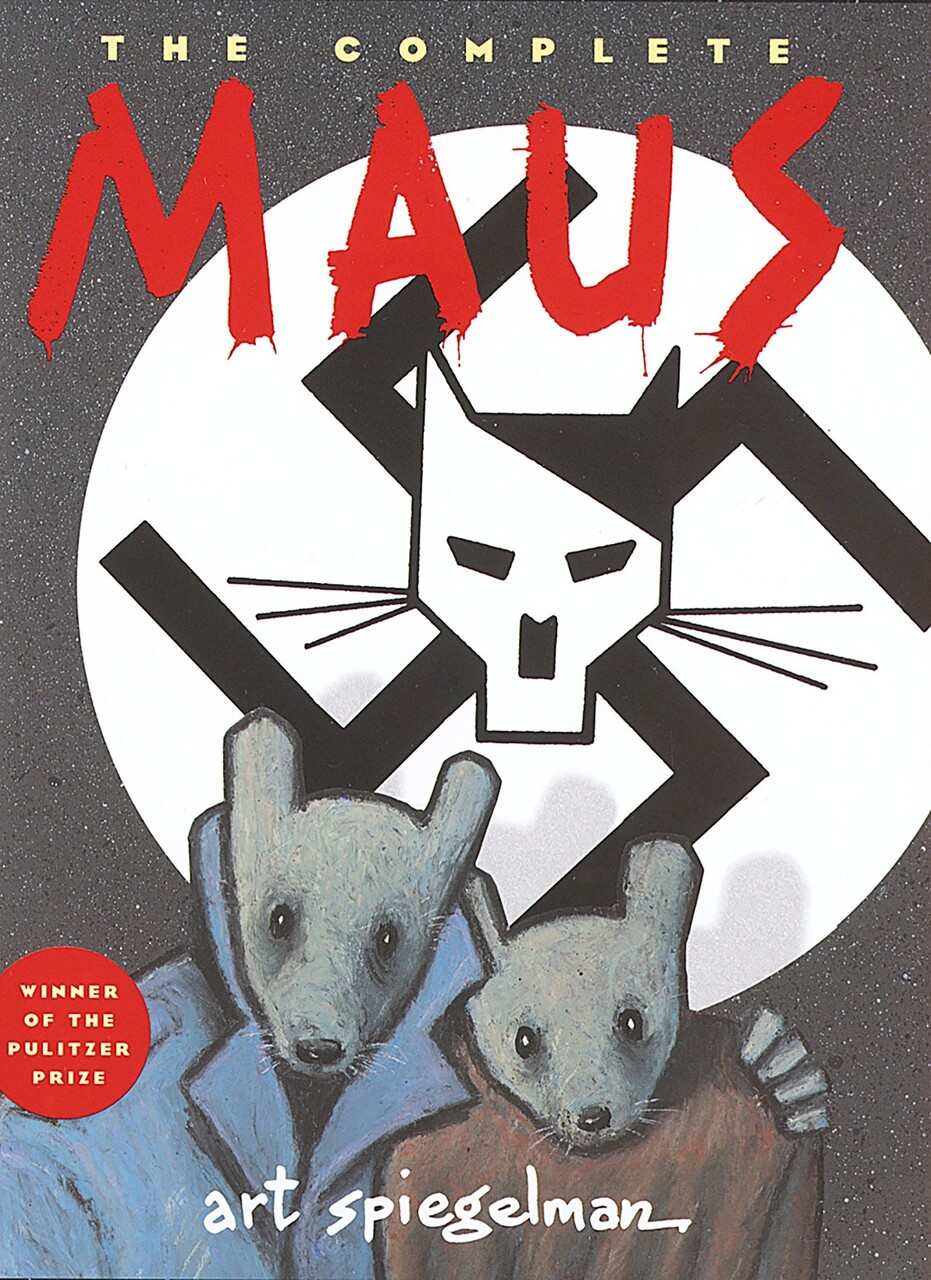Review: The Complete Maus

The Pulitzer Prize-winning Maus tells the story of Vladek Spiegelman, a Jewish survivor of Hitler’s Europe, and his son, a cartoonist coming to terms with his father’s story. Maus approaches the unspeakable through the diminutive. Its form, the cartoon (the Nazis are cats, the Jews mice), shocks us out of any lingering sense of familiarity and succeeds in “drawing us closer to the bleak heart of the Holocaust” (The New York Times).
Maus is a haunting tale within a tale. Vladek’s harrowing story of survival is woven into the author’s account of his tortured relationship with his aging father. Against the backdrop of guilt brought by survival, they stage a normal life of small arguments and unhappy visits. This astonishing retelling of our century’s grisliest news is a story of survival, not only of Vladek but of the children who survive even the survivors. Maus studies the bloody pawprints of history and tracks its meaning for all of us.
So, as I mentioned in my entry on the graphic novel Watchmen, I chose Maus (and Maus 2) as the next step in my foray into the graphic novel medium. Maus is, first and foremost, the tale of a holocaust survivor. Written by Art Spiegelman, the core narrative surrounds his father, Vladek, and his life in Poland before, during, and shortly after the holocaust. In an unusual twist, the story is told from a sort of metabiographical perspective, in that the reader is presented with a depiction, not only of Vladek’s tale, but also of the author’s experiences as he goes through the process of interviewing his father and writing the book. The result is that we not only learn of Vladek’s experiences surviving the unthinkable, but also the effect these events have on his present day life and the individuals connected to him.
What I find most remarkable about the work, aside from the incredible and often disturbing depiction of the events Vladek managed to live through, is how completely honest and forthright Spiegelman is. As a metabiography, we are allowed to observe as the author attempts to come to grips with his relationship with his father and the things he faced. It is this tale which is often lost when discussing the holocaust, but it is an equally important one, as it reminds us that those horrible events not only shaped the lives of the people who lived through it, but also the lives of their friends and family as well.
So, in summary, if you’re at all interested in graphic novels, this really is a must-read. It’s an excellent example of how to exploit the graphic novel medium in order to tell the story. In a way, it’s brevity (just shy of 300 pages) is a testament to how powerful the graphic story telling medium can be, as it allows the author to present in a single frame what would take paragraphs to express (poorly) in words.
So, next up, V for Vendetta! After that, who knows. Perhaps I’ll have to order that copy of Blankets (graphic novel) (unfortunately, From Hell isn’t scheduled to be reprinted until October)…
-
{% for webmention in webmentions %}
-
{{ webmention.content }}
{% endfor %}
No bookmarks were found.
{% endif %}Likes
-
{% for webmention in webmentions %}
-
{% if webmention.author %} {% endif %}
{% endfor %}
-
{% for webmention in webmentions %}
-
{{ webmention.content }}
{% endfor %}
No links were found.
{% endif %}Replies
-
{% for webmention in webmentions %}
-
{% if webmention.author %} {% endif %} {% if webmention.content %} {{ webmention.content }} {% else %} {{ webmention.title }} {% endif %}
{% endfor %}
-
{% for webmention in webmentions %}
- {% endfor %}
-
{% for webmention in webmentions %}
- {% endfor %}
No reposts were found.
{% endif %}-
{% for webmention in webmentions %}
- {% endfor %}
No RSVPs were found.
{% endif %}-
{% for webmention in webmentions %}
-
{% if webmention.author %} {% endif %} {% if webmention.content %} {{ webmention.content }} {% else %} {{ webmention.title }} {% endif %}
{% endfor %}
No webmentions were found.
{% endif %}